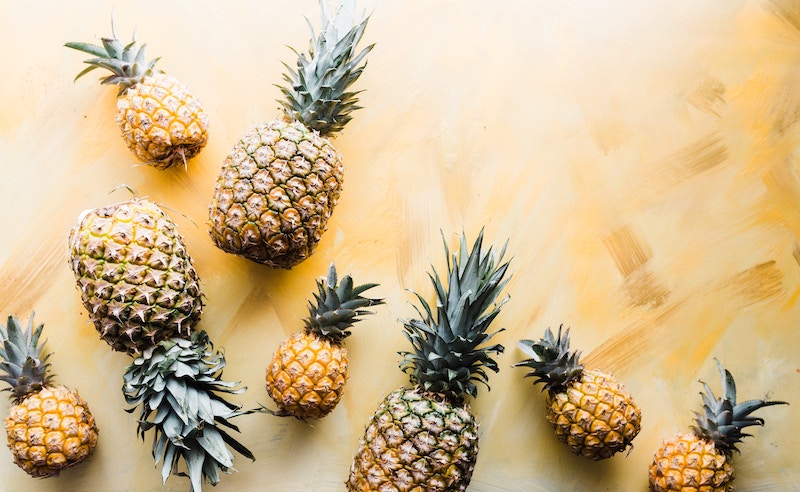Building a Core Regimen of Healthy Foods
Episode #3 of the course Hack your diet: Using nutrition science to live healthier, longer, and diet-free by John Robin
Welcome to our third diet hack!
Yesterday, we saw the how of better eating. It was just a glimpse, of course: Training yourself to enjoy healthy food is a lifelong practice, but I promise, the more you do it, the better it becomes.
Today, we begin the what, and what better place to start than with the backbone of a healthy diet?
Falling in Love with Fruits and Vegetables
In yesterday’s action plan, I gave you the assignment to eat a potato baked in olive oil with salt and pepper. When you train yourself to notice its flavors, know that it is just the beginning.
Today, we are going to introduce the most fundamental kinds of healthy foods to eat, and I hope you’ll make a list and start training yourself to enjoy their tastes as well.
I promise, though, that I’m going to avoid diet fads. The whole point of what we’re learning is to start enjoying healthy foods so on average, you’ll eat them more. Being full mostly on those foods, you’ll then seek out unhealthy foods to sate hunger less often. You can still enjoy a burger at a family barbeque or lemon meringue pie at a dinner party. You can still eat whatever you want to eat, just perhaps less frequently.
Today, we are going to discuss vegetables, fruits, grains, and nuts. We’ll get more into dairy and meat in a later lesson.
Vegetables. Vegetables are full of nutrients, especially root vegetables like:
• potatoes
• parsnips
• beets
• onions
These vegetables are fundamental because of how they help you get potassium.
Why is potassium so important? It helps our cells burn energy more efficiently, especially muscles. The daily recommended amount of potassium is around 3000mg, but in our typical diet, we get usually less than 1000mg. This will not kill you, but the result is like going through your life with the parking brake on.
You might think you get enough potassium if you eat bananas, but it’s only 450mg per banana. Eating large amounts of root vegetables and squash will get you closer to the 3000mg target, and you’ll be a dynamo of energy.
Though not a root vegetable, add butternut or acorn squash to the list of root vegetables, and you have a true potassium cocktail. Carrots are a great source of potassium too, but be warned that they have a great deal of vitamin A, as does squash, so eating both together might put you close to the toxic upper limit for vitamin A [1].
Other great vegetables that are loaded with vitamins and nutrients:
• broccoli
• mushrooms
• bell peppers (redder = more antioxidants)
• kale
• spinach
Try to get about six to eight servings of these vegetables every day.
Fruits. Fruits are also full of healthy nutrients, though they are higher in sugar, so you’ll want to be careful and limit them to about four to five servings/day. These staple fruits are great to get you started:
• banana
• orange
• apple
• dried figs
• dried apricots
• cranberries
• pineapple
• red grapes
• prunes (just one per day!)
The other great thing about eating many vegetables and fruits is that they are high in fiber. A diet high in fiber will keep you more regular, which is excellent for colon health.
Grains and nuts. Grains and nuts are a great addition to your core diet of fruits and vegetables. In fact, if you want to further top up your nutrition, eat these as well:
• roasted almonds (~6-8/day), another source of potassium [2]
• sunflower seeds (1 tsp/day), a source of vitamin E [3]
• peanuts, a source of niacin and folate [4]
• ground flax (1 tbsp/day, best mixed in yogurt or peanut butter), a source of omega 3
• wild rice or whole grains (ideal because of less processing)
Meat is fine, but try to limit your intake to one serving per day, since it’s high in saturated fat. One serving of meat is ½ a chicken breast or ¼ lb of beef.
The same goes for dairy. It’s a great source of calcium, but because it’s so high in saturated fat, you’re best getting calcium from a supplement instead, limiting dairy as a treat.
Action: Continue Your Food Meditation with These Foods
Your homework for today is to take one of the foods mentioned and meditate on its flavors.
Why not start with an apple? I eat an apple every afternoon when I take a short walk. It tastes wonderful, but that’s trained: I’ve come to associate the pleasure of thinking, reflecting, and stretching my limbs with the refreshing taste of an apple.
Start training now. Make a list of all the foods from today’s lesson, and work your way through them.
Tomorrow, we’ll start exploring the dangers of sugar by way of glycation science.
Recommended resource
The Cronometer app/website: a great way to learn how what you eat and the portions deliver the right levels of nutrients.
References
[1] Vitamin A: Benefits, Deficiency, Toxicity
[2] Almonds: Nutrition and Health Benefits
[3] Are Sunflower Seeds Good for You?
[4] Peanuts
Share with friends

